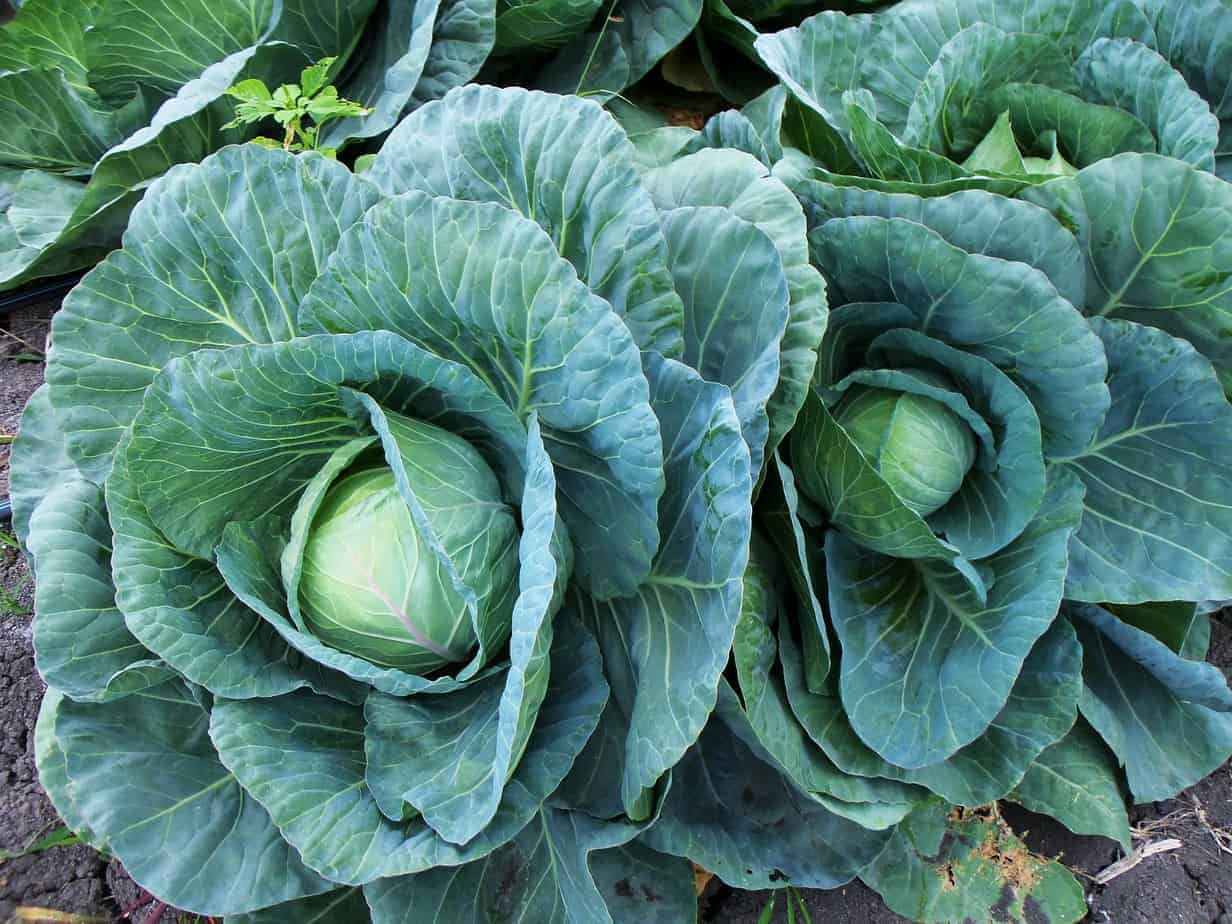Cabbage is a popular garden crop and one that is versatile in the kitchen, although it’s not without its challenges, like stunted growth, small heads, and of course pest pressure.
For those who want to grow massive cabbage heads, having the right soil is important, but you can make almost any soil work for you as long as you take into account each soil type’s properties, whether it’s sandy soil or heavy, clay soil.
On this page:
Does Cabbage Grow in Sandy Soil?
Cabbage can grow in sandy soil, and is sometimes grown commercially in sandy soil. However, you may run into issues when growing in sandy soil in the home garden; chiefly, lack of water retention and greater nutrient loss.
Sandy soil is ideal for root vegetables like carrots and potatoes since it’s loose and won’t restrict root growth. And still, for cabbage sandy soil will allow easier root development. Sandy soil also warms up faster than other soils, which can help early growth.
However, sandy soil dries out very quickly when exposed to the sun, which can be detrimental to cabbage growth. Cabbage is a biennial, meaning it normally flowers in its second year, but additional drought stress from constantly drying out can cause your cabbage plants to prematurely bolt.
Just as sand cannot hold onto water well, it also can’t hold onto nutrients, which can easily wash away in heavy rain or regular watering. Because of this, sandy soil is more prone to nutrient depletion.
Quick Solutions to Improve Sandy Soil
To reduce sandy soil drying out, you can apply a layer of mulch, such as wood chips, which will shade the surface of your sandy soil and protect it from drying out too quickly. This will also reduce the amount of water you need to use, which will also slow down nutrients from being washed away..
Cabbage grown in sandy soils may need more regular fertilizing. Apply liquid plant food every 7 to 14 days, or slow-release fertilizer spikes/granules every 1 to 3 months, as per the instructions.
“Compost is the easiest way to improve soil long-term, but it can take time to build up soil rich with microbial life and nutrients.“
Can Cabbage Grow in Clay Soil?
Cabbage can grow in clay soil, but care needs to be taken not to overwater. Loosening up heavy, clay soil before transplanting can temporarily alleviate soil compaction and improve growth.
Clay soil has the opposite problem of sandy soil: it holds on to water too much. In extreme cases, when the soil is constantly waterlogged, young cabbage plants can die from root rot.
In addition, clay is also extremely dense, which makes it harder for roots to penetrate the soil. The result is stunted cabbage growth.
That said, some clay in your soil is beneficial. Clay is a rich source of minerals and micronutrients essential for plant growth.
Quick Solutions to Improve Clay Soil
The problem with heavy clay soils is the basic structure of the soil, which can compact too easily. It’s recommended to loosen clay soil with a cultivator or tiller (by hand or machine) before transplanting cabbage.

Does Cabbage Grow in Loam Soil?
Loam soil is ideal for cabbage growth, especially when amended with organic matter like compost.
Considered the holy grail of soils is the holy grail of soils, loam soil has low amounts of clay, moderate amounts of sand, and a good amount of silt.
Silt is somewhere between clay and sand in particle size, has the benefits of both without the drawbacks. However, silt is very light and can wash away easily.
What Type of Soil Does Cabbage Grow Best In?
The perfect soil for cabbage is a loamy soil amended with lots of organic matter like compost.
Using Compost to Improve Sandy and Clay Soils for Cabbage
Compost is the easiest way to improve soil long-term, but it can take time to build up soil rich with microbial life and nutrients. Compost improves the water and nutrient retention of sandy soil while loosening the structure of clay soil.
If you have very sandy or clay soil, you can till compost into the top few inches of soil to immediately improve it. Add a layer of compost on top of your native soil every year to gradually build a thick layer of rich soil. Cabbage roots only grow 18 to 36 inches into the soil, so even 12 inches of good soil built up over the years above heavy clay or sandy soil will improve growth significantly.
For those looking for a shortcut, if you have the time and money to invest in raised beds, you can fill 12- to 36-inch raised beds up with loamy soil or a mix of soil and compost.
